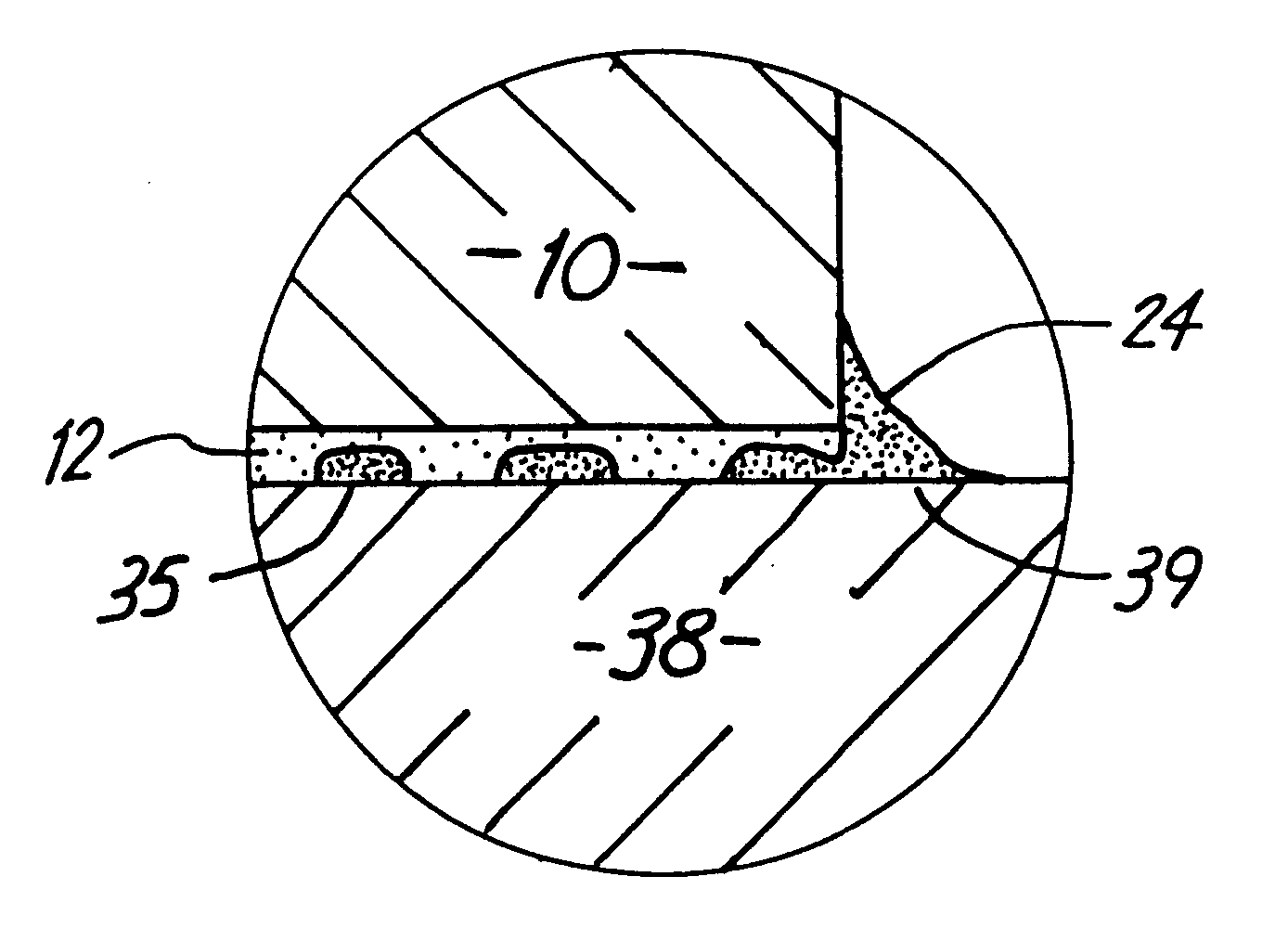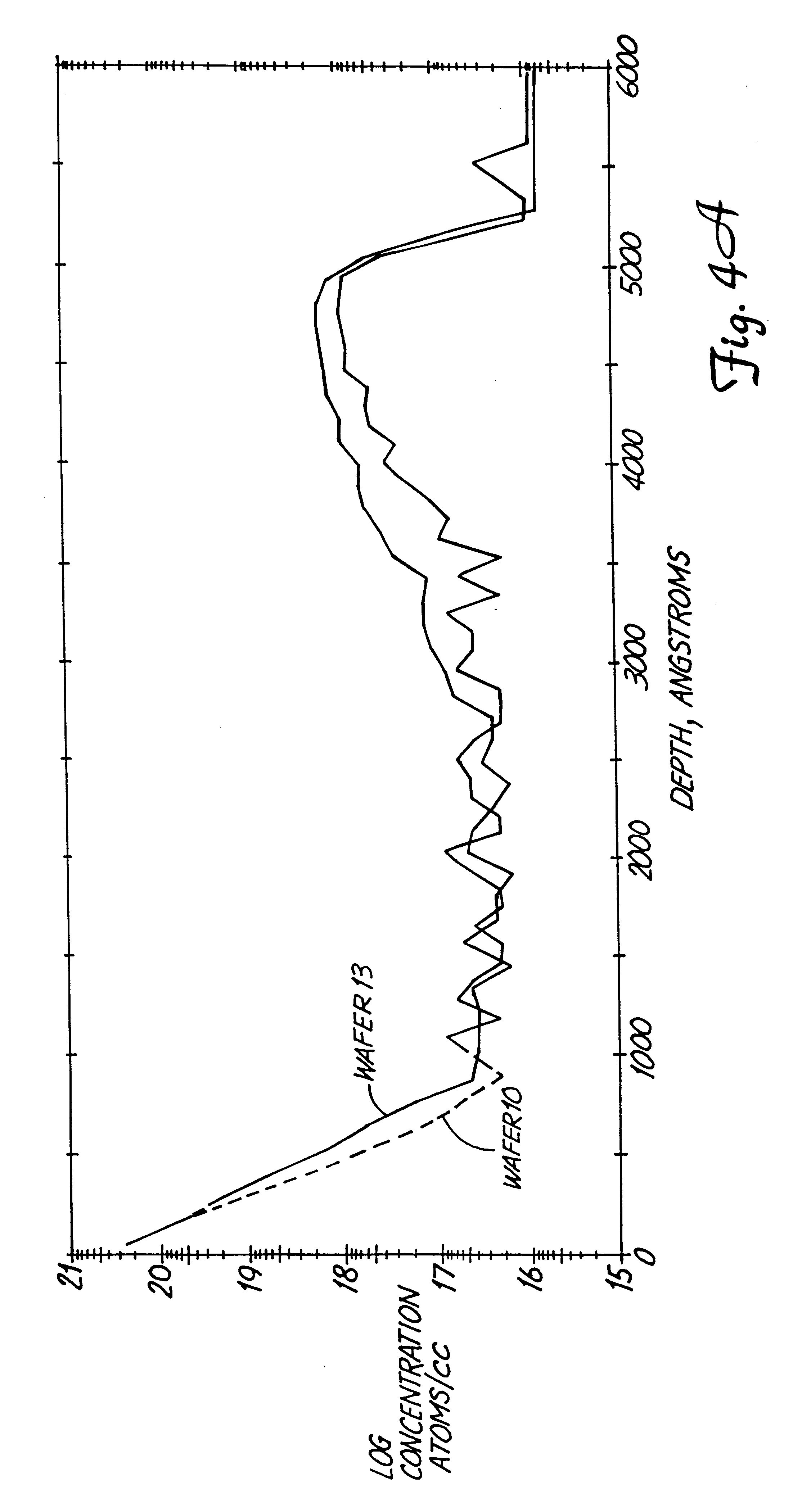Planarization method using fluid composition including chelating agents
- Summary
- Abstract
- Description
- Claims
- Application Information
AI Technical Summary
Benefits of technology
Problems solved by technology
Method used
Image
Examples
example 1
In this Example 1, four wafers were subjected to planarization. The CMP process was performed using a Westech CMP planarization unit, Model 372, available from IPEC / Westech. The four wafers were planarized for 1 minute and 53 seconds. The wafers undergoing planarization were all run with a 5 psi downforce pressure utilizing the wafer holder or carrier, a 2 psi backside pressure utilizing the wafer table or platen, carrier rotation at 28 rpm, platen rotation at 33 rpm, a 100 ml / mm flowrate of the slurry, and a wafer table or platen temperature of about 115.degree. F. All of the wafers were silicon wafers having BPSG deposited thereon; the BPSG layers being doped equally for each wafer and of a thickness of about 12,500 .ANG. BPSG. Between the planarization of each wafer, a pad conditioning step was performed which includes running a diamond studded disc across the pad, for a time period of about 75 seconds, to refresh the pad surface. After planarization, the two (BPSG / Si) wafers, 10...
example 2
In this Example 2, eight wafers were subjected to planarization. The CMP process was performed using a Westech CMP planarization unit, Model 472, available from IPEC / Westech. All the wafers were planarized for 20 seconds. When the conventional slurries were utilized with EDP, the slurry included 0.2 grams of EDP per 2 gallons of conventional slurry. The wafers undergoing planarization were all run with a 5 psi downforce pressure utilizing the wafer holder, a 2 psi backside pressure utilizing the wafer table, wafer table or platen rotation at 33 rpm, carrier or holder rotation at 28 rpm, a 100 ml / mm flowrate of the slurry, and a wafer table or platen temperature of about 115.degree. F. All of the wafers were silicon wafers having BPSG deposited thereon of about 3000 .ANG.. The BPSG layers were doped equally for each wafer. Between the planarization of each wafer, a pad conditioning step was performed which includes running a diamond studded disc across the pad, for a time period of a...
example 3
In this Example 3, three wafers were subjected to planarization. The CMP process was performed using a Westech CMP planarization unit, Model 472, available from Westech Systems, Inc. All wafers were planarized for 20 seconds. When the conventional slurries were utilized with EDP, the slurry included 0.2 grams of EDP per 2 gallons of conventional slurry. The wafers undergoing planarization were all run with a 5 psi downforce pressure utilizing the wafer holder, a 2 psi backside pressure utilizing the wafer table, table rotation of 33 rpm, carrier or holder rotation of 28 rpm, a 100 ml / mm flowrate of the slurry, and a wafer table or platen temperature of about 115.degree. F. All of the wafers were silicon wafers having BPSG deposited thereon of about 3000 .ANG.. The BPSG layers were doped equally for each wafer. Between the planarization of each wafer, a pad conditioning step was performed which includes running a diamond studded disc across the pad, for a time period of about 75 seco...
PUM
| Property | Measurement | Unit |
|---|---|---|
| Time | aaaaa | aaaaa |
| Concentration | aaaaa | aaaaa |
| Water solubility | aaaaa | aaaaa |
Abstract
Description
Claims
Application Information
 Login to View More
Login to View More - R&D
- Intellectual Property
- Life Sciences
- Materials
- Tech Scout
- Unparalleled Data Quality
- Higher Quality Content
- 60% Fewer Hallucinations
Browse by: Latest US Patents, China's latest patents, Technical Efficacy Thesaurus, Application Domain, Technology Topic, Popular Technical Reports.
© 2025 PatSnap. All rights reserved.Legal|Privacy policy|Modern Slavery Act Transparency Statement|Sitemap|About US| Contact US: help@patsnap.com



